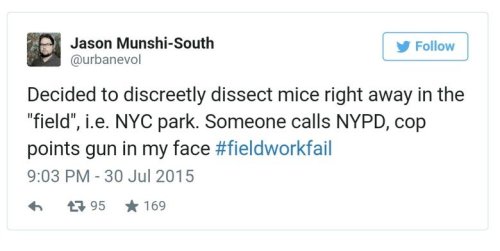I Wonder How Many People Have Lay Awake At Night Totally In Awe About How Stupid They Have Been … How
I wonder how many people have lay awake at night totally in awe about how stupid they have been … how much they trusted a person who broke them… how they thought they knew someone they clearly didn’t… how happy a person could’ve made them if… how old a relationship would be had it worked out… how long it takes to heal… how do they know hell isn’t this lifetime… how much they love someone… how much they miss someone… how many marks that essay’ll get them… how many more days before it ends… how many people have walked away… how much they’ve changed… I wonder, how many people are awake right now heartbroken, heartless or head over heels. - 4 am thoughts
Your secrets are safe here (via thelovewhisperer)
More Posts from Sordidsass-blog and Others










Spontaneous Adventurer Tobias Meyer Captures Astoundingly Beautiful Photos of Secluded Landscapes










hey so you know that vicious cycle of mental health making you unproductive which makes your mental health worse? don’t worry friend I am here with something that can help
just get one thing done. break the cycle. it doesn’t have to be some big task. in fact it’s better if it isn’t. decide on something that takes five minutes or less. keep it tiny and manageable - the key is to feel like you’ve accomplished something, so when your brain is all, you can’t even do a single thing all day except lay in bed being useless, you can be like, oh but I did do something, brain, suck on that. it might not seem like much at the time but it helps a lot to have something tangible you can point to
do you have dirty dishes in your bedroom? get rid of ‘em. you don’t have to wash them, just put them in the sink with soapy water. done. easy.
do you have a pile of empty water bottles sitting there? good for you staying hydrated. but you don’t need a mountain of plastic reminders. throw a few in the trash or in recycling. don’t worry about chasing down every single one, just pick a number. get rid of 5 or 10. easy, manageable even if you feel terrible. done.
do you need to do something early tomorrow? get something ready now. just one thing. lay out an outfit. fill the coffee maker so you can just press a button tomorrow. pack your backpack or purse. bonus benefit, future you will have an extra few minutes to breathe in the morning.
do you have a pet? spend 5 minutes with your pet. cuddle them. play tug of war. make baby noises at them. your pet loves you. I bet they miss you when you’re sad. you’ll both feel better.
has it been 3 weeks since you did laundry? pick your clothes up off the floor and put them in a laundry basket. don’t actually wash them or even take the basket anywhere. just collect the clothes for later so they aren’t spread all over. it’ll make actually doing them that much easier when you have more energy
did you manage to wash your clothes but not put them away? fold something. fold another thing. and one more. put them away. three things. you got this one.
did you do your one thing? good. I’m proud of you. even if it didn’t make you feel better, guess what? you did a thing. you got something done, you can be done now. you can go back to bed if you want.
What is bipolar disorder? PART II
Hypomania
Hypomania is a mood episode that mostly people with type II bipolar disorder experience (but people with type I can experience it too) similar to mania. The difference between mania and hypomania is that in hypomania, the individual does not require hospitalization and there are never any psychotic features present. Individuals in a hypomanic episode typically experience:
Increase in energy
Decreased sleep
Pressured speech
Increase in goal-oriented activity
Irritability
Elevated mood
Psychomotor agitation
Grandiosity
Disinhibition and focus on instant gratification that can result in spending sprees or risky sexual behaviour
It is important to note that these changes in mood and behaviour are enough to draw the attention of others, especially family and friends. It is important that you have a friend or family member that can act as your “life guard”….someone to tell you when they notice these behaviours, and someone who you trust enough to take their word on it.
Mixed Episode
A mood episode that includes features of mania/hypomania and depression simultaneously.
Diagnostic Criteria for the Diagnosis of Bipolar Disorder
Type I: One or more manic episodes. A depressive or hypomanic episode is not required for diagnosis, but it frequently occurs.
Type II: One or more hypomanic episodes and one or more major depressive episodes.
Cyclothymia: History of hypomanic episodes with periods of depression that do not meet criteria for major depressive episodes. Low-grade cycling of mood which appears to the observer as a personality trait, and interferes with functioning.
BD NOS (not otherwise specified): Catchall category. Diagnosed when the disorder does not fall within a specific subtype.
Types of Cycling
Rapid cycling: Four + episodes per year.
Ultra rapid cycling: Several distinct episodes within a week
Ultra radiant cycling: multiple episodes within the same day










This is what it looks like when non-straight, non-white, non-male people get to host late night shows
Dunking on the “Blacks for Trump” woman and a Carmilla shoutout is the kind of glorious content we have to look forward to when networks finally stop hiring only straight cis white dudes to host late night shows. Please.
Gifs: Late Night with Seth Meyers
reblog this post and tag ur Depression Meals™
Things we've figured out about BPD on this blog
So like, i feel like we’ve made some progress conceptualizing some aspects of bpd, a lot of which arent really stated as symptoms officially, so im just gonna summarize some points that’ve been more or less deemed collectively relatable.
no concept of units of measurement, applies to time, weight, distance, etc. cannot determine sizes without reference point
General no concept of time, memories are not stored linearly, incapable of determining passing time without a clock
- ‘thought cloud’ thinking, mostly abstract/conceptual where conclusions are drawn from general ideas rather than formulatic logical reasoning, meaning: A -> ???…C-B-> A -> ??!! AD->B…. = D VS. A -> B -> C = D
no object permanence heavily related to relationships with other people, relationship and concept of person vanishes when not interacting, incapable of manifesting a mental image of person when trying recall them, may recall them more as a concept or idea
maladaptive daydreaming, escapist tendency to live in an elaborate fantasy world instead of real life, often related to a ‘story’ you create of how your life should go where you may play the ‘tragic hero’, confusion results when real life doesn’t line up accordingly to this story
psychotic symptoms more common than initially believed, including delusional thinking, illusory/hallucinatory things, paranoia, etc. tactile hallucinations, shadow people, insects, dots, etc.
default perception of vision may be different than normal, colors are brighter, sounds/tastes/all senses are slightly amplified, static or ‘snow vision’ common, objects can warp or melt in peripheral or blurred vision, patterns and textured surfaces glitter, move, or go all trippy, solid colors or empty spaces are perceived as multiple colors simultaneously
sense of hunger is nonexistent or dysfunctional, hunger based heavily on emotions instead of a physical body response
tendency to draw the following: swirls, sky imagery, eyes, trees, circuits, dots, floaty and abstract subject matter that reflects ‘living in your head’, not being grounded, and have an intangible/fractured or ever-morphing sense of identity
wanting to be sick or clinging to self-destruction as a consistent quality to base identity off of is common, suffering is so ingrained into identity and sense of self that recover is undesirable, wanting to present the image of being fucked up because at least you know how to do that right - black and white/all or nothing thinking is present in literally every aspect of life and logic processing, instinctual way of processing conclusions, thoughts, and feelings only exist on two extremes with no concept of a middle ground, this conflict leads to not being able to decide any aspect of yourself which leads to nonexistent sense of self
dissociative symptoms work on a spectrum, may include varying degrees of depersonalization/derealization, may occur episodic or chronically, and can range from a ‘not entirely there’ permanent mental state to a temporary state of panic where you’re completely detached from reality. the range and frequency of these variations are dependent on the individual
psuedohallucinatory voices or people in head, may be described as facets, alters, or some other mystery category, can be percieved as seperate entities or different parts of you, conversations with these voices are common and may happen out loud frequently. headmates
“imposter syndrome” very common, where you question the validity/existence of your disorder, question whether or not you may have a completely different disorder, worry about faking it or exaggerating symptoms, want to prove the existence of your illness by getting worse, etc.
lack of sympathy results from excess empathy, because of our ability to feel others emotions strongly, we must put up a wall and refuse to acknowledge other’s emotions at all, for fear of feeling them too strongly and getting hurt in the process. for example, refusal to help comforting someone emotionally, because allowing yourself to do so would make you secondhandedly feel the exact misery they’re feeling that lingers long after the interaction



so last night, I came home about 10:30 just to find this abandoned, unlocked, empty post truck just parked on the side of the road near my house, next to the mouth of the woods. It was super odd because post trucks do not run at night, neither do they just suddenly appear unlocked. Now that’s some @sixpenceee shit
-
 mudontires liked this · 5 years ago
mudontires liked this · 5 years ago -
 silent-ringer reblogged this · 5 years ago
silent-ringer reblogged this · 5 years ago -
 purifiedgold reblogged this · 5 years ago
purifiedgold reblogged this · 5 years ago -
 imsadletshavesexx reblogged this · 5 years ago
imsadletshavesexx reblogged this · 5 years ago -
 imsadletshavesexx reblogged this · 6 years ago
imsadletshavesexx reblogged this · 6 years ago -
 iloveashleyjackson reblogged this · 6 years ago
iloveashleyjackson reblogged this · 6 years ago -
 analslut6969-blog liked this · 6 years ago
analslut6969-blog liked this · 6 years ago -
 iloveashleyjackson reblogged this · 7 years ago
iloveashleyjackson reblogged this · 7 years ago -
 imsadletshavesexx reblogged this · 7 years ago
imsadletshavesexx reblogged this · 7 years ago -
 dmoneyhoney reblogged this · 7 years ago
dmoneyhoney reblogged this · 7 years ago -
 wearechildrenofthelight liked this · 7 years ago
wearechildrenofthelight liked this · 7 years ago -
 baynicolex3 liked this · 8 years ago
baynicolex3 liked this · 8 years ago -
 maggieegeiger reblogged this · 8 years ago
maggieegeiger reblogged this · 8 years ago -
 maggieegeiger liked this · 8 years ago
maggieegeiger liked this · 8 years ago -
 creatingnikki liked this · 8 years ago
creatingnikki liked this · 8 years ago -
 imsadletshavesexx reblogged this · 8 years ago
imsadletshavesexx reblogged this · 8 years ago -
 star-singer reblogged this · 8 years ago
star-singer reblogged this · 8 years ago -
 breaks-in-the-chaos-blog liked this · 8 years ago
breaks-in-the-chaos-blog liked this · 8 years ago -
 imsadletshavesexx reblogged this · 8 years ago
imsadletshavesexx reblogged this · 8 years ago -
 imsadletshavesexx reblogged this · 8 years ago
imsadletshavesexx reblogged this · 8 years ago -
 fuckingcuntz-blog1 liked this · 8 years ago
fuckingcuntz-blog1 liked this · 8 years ago -
 90snefertiti reblogged this · 8 years ago
90snefertiti reblogged this · 8 years ago -
 imsadletshavesexx reblogged this · 8 years ago
imsadletshavesexx reblogged this · 8 years ago -
 balmy-angst liked this · 8 years ago
balmy-angst liked this · 8 years ago -
 heytheretc reblogged this · 8 years ago
heytheretc reblogged this · 8 years ago -
 unheavened liked this · 8 years ago
unheavened liked this · 8 years ago -
 lilymillz liked this · 8 years ago
lilymillz liked this · 8 years ago -
 arilyxer liked this · 8 years ago
arilyxer liked this · 8 years ago -
 111oveebug liked this · 8 years ago
111oveebug liked this · 8 years ago -
 sictransitfuckinggloria liked this · 8 years ago
sictransitfuckinggloria liked this · 8 years ago -
 endless-thxughts reblogged this · 8 years ago
endless-thxughts reblogged this · 8 years ago -
 endless-thxughts liked this · 8 years ago
endless-thxughts liked this · 8 years ago -
 myanchor reblogged this · 8 years ago
myanchor reblogged this · 8 years ago -
 kirawats reblogged this · 8 years ago
kirawats reblogged this · 8 years ago -
 toridevitoxox reblogged this · 8 years ago
toridevitoxox reblogged this · 8 years ago -
 katiehuffman-12-blog liked this · 8 years ago
katiehuffman-12-blog liked this · 8 years ago -
 hollyyyallennn reblogged this · 8 years ago
hollyyyallennn reblogged this · 8 years ago -
 maddyraposo13-blog reblogged this · 8 years ago
maddyraposo13-blog reblogged this · 8 years ago
Struggling with mental illness after a traumatic event most likely caused by mental illness. Sexual Assault Survivor.
282 posts
